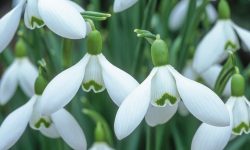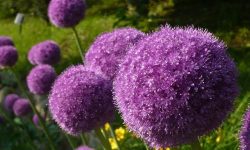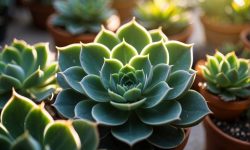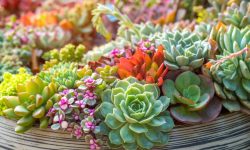Introduction
Hibiscus plants, with their striking blooms and lush foliage, are a favorite among gardeners and plant lovers worldwide. Whether you’re growing them indoors or outdoors, hibiscus plants can thrive and bloom abundantly with the right care. However, they are not a “set-it-and-forget-it” plant. To achieve vibrant flowers and robust growth, both indoor and outdoor hibiscus require thoughtful attention to light, water, soil, temperature, pruning, and pest management. In this detailed guide, you’ll learn how to care for hibiscus like a seasoned pro—ensuring your plants remain healthy, beautiful, and consistently blooming.
Understanding Hibiscus Varieties
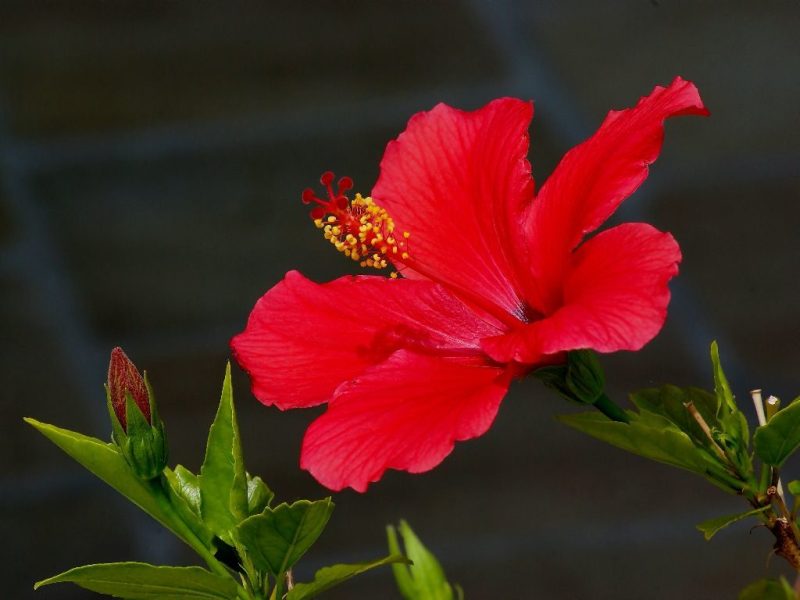
Tropical vs. Hardy Hibiscus
Before diving into care techniques, it’s essential to understand the two main types of hibiscus. Tropical hibiscus, commonly grown in warmer climates or indoors, produce bright, exotic-looking flowers in a wide range of colors. These plants are frost-sensitive and require warm temperatures year-round. Hardy hibiscus, on the other hand, can survive in colder climates and are often planted in gardens across temperate regions. Their blooms are larger and often come in shades of pink, red, and white.
Knowing which variety you have will determine how you manage light exposure, winter care, and overall plant maintenance.
Light Requirements
Outdoor Lighting Needs
For outdoor hibiscus, sunlight is one of the most critical elements. These plants thrive in full sun, needing at least six hours of direct sunlight each day. Inadequate light can lead to poor blooming and leggy growth. In hot climates, some afternoon shade may prevent leaf scorching, especially during intense summer heat.
Indoor Lighting Setup
When grown indoors, hibiscus plants require bright, indirect light. A south-facing window is ideal, but east or west-facing windows can also work if the plant receives sufficient daylight. If natural light is limited, you may need to supplement with grow lights to ensure consistent blooming and healthy foliage.
Watering Techniques
Balancing Moisture Levels Outdoors
Hibiscus plants prefer consistently moist soil, but not waterlogged conditions. Outdoor plants should be watered deeply when the top inch of soil feels dry. During hot, dry periods, daily watering might be necessary. In cooler weather, reduce the frequency but avoid letting the soil completely dry out.
Managing Indoor Watering
Indoor hibiscus requires more careful monitoring of water. Overwatering is a common issue, often leading to root rot. Check the soil regularly and water only when the top inch is dry. Use pots with proper drainage holes and avoid letting the plant sit in standing water.
Soil and Fertilization
Choosing the Right Soil Mix
Well-draining soil is vital for hibiscus health. For outdoor planting, mix garden soil with organic compost to improve nutrient content and drainage. Raised beds can help manage excess moisture. For potted indoor plants, use a lightweight potting mix formulated for tropical plants.
Feeding for Maximum Blooms
Hibiscus are heavy feeders. Fertilize outdoor hibiscus every two weeks during the growing season with a balanced, water-soluble fertilizer. Indoor hibiscus can be fed monthly, adjusting frequency based on plant response. Look for fertilizers rich in potassium and low in phosphorus for optimal flowering.
Temperature and Humidity Control
Outdoor Temperature Guidelines
Tropical hibiscus cannot tolerate frost. In regions with cold winters, they must be brought indoors or protected during colder months. Ideal outdoor temperatures range from 60°F to 90°F (15°C to 32°C). Hardy hibiscus can withstand colder climates but may die back to the ground in winter and regrow in spring.
Creating Indoor Ideal Conditions
Indoors, hibiscus plants prefer temperatures between 65°F and 75°F (18°C to 24°C). Avoid placing them near drafts, radiators, or air conditioning vents. Humidity should be moderate to high. If your indoor environment is dry, consider using a humidity tray or room humidifier to mimic the plant’s native tropical habitat.
Pruning and Maintenance
Shaping and Encouraging Growth
Regular pruning helps maintain shape and encourages new growth and flower production. For outdoor hibiscus, prune in early spring just before new growth begins. Remove dead or weak stems and shape the plant to your desired size. Indoor hibiscus can be lightly pruned year-round to maintain shape, especially if they become leggy.
Repotting and Root Health
Indoor hibiscus may become root-bound over time. If growth slows or roots begin emerging from drainage holes, it’s time to repot. Choose a container one size larger and refresh the potting soil. Spring is the best time for repotting, allowing the plant to settle in during its active growth period.
Pest and Disease Management
Common Pests to Watch
Hibiscus plants can attract pests like aphids, spider mites, whiteflies, and mealybugs. Outdoor plants may also be visited by caterpillars and beetles. Regularly inspect leaves, especially the undersides, for signs of infestation. Indoor plants are particularly vulnerable in low-humidity conditions.
Natural and Chemical Treatments
For minor pest problems, a strong stream of water can dislodge insects. Insecticidal soap or neem oil sprays are effective for both indoor and outdoor use. Severe infestations may require targeted insecticides, but always follow label instructions and avoid overapplication.
Fungal diseases like powdery mildew and root rot can also affect hibiscus. Ensuring proper airflow, avoiding overhead watering, and maintaining appropriate soil moisture are the best preventative measures.
Seasonal Care Tips
Preparing for Winter
For outdoor tropical hibiscus, move the plants indoors before the first frost. Prune lightly to reduce stress and check for pests before transitioning inside. Place them in a well-lit room and reduce watering frequency during dormancy. Hardy hibiscus in the garden can be mulched heavily to insulate roots and protect from freeze damage.
Reviving in Spring
As temperatures warm, gradually reintroduce indoor plants to the outdoors, starting with shaded areas and increasing light exposure over several days. Resume regular feeding and pruning to stimulate vigorous spring growth and bloom.
Encouraging Continuous Blooms
Environmental Consistency
To maintain blooming, consistency is key. Sudden changes in temperature, light, or watering routines can cause hibiscus to drop buds. Choose a stable location and stick to a regular care schedule. Healthy, stress-free plants are the most prolific bloomers.
Managing Bud Drop
Bud drop is often caused by overwatering, underwatering, or environmental stress. Evaluate light exposure, moisture levels, and temperature stability. Adjust care routines as needed and be patient—hibiscus often recover quickly when conditions improve.
FAQ About Caring for Hibiscus Plants
How often should I water my hibiscus?
Watering frequency depends on whether the plant is indoors or outdoors and the season. Outdoor hibiscus typically needs watering every 1–2 days during hot weather, while indoor hibiscus should only be watered when the top inch of soil feels dry. Overwatering can lead to root rot, so always check soil moisture first.
Can hibiscus survive indoors all year round?
Yes, tropical hibiscus can thrive indoors year-round if provided with sufficient light, warmth, and humidity. Place them near bright windows or use grow lights, and avoid drafts or extreme temperature changes. Hardy hibiscus is better suited for outdoor growing due to its seasonal dormancy cycle.
Why are my hibiscus buds falling off before blooming?
Bud drop is commonly caused by stress from overwatering, underwatering, low humidity, or sudden temperature changes. Ensure your plant is receiving consistent care with the right balance of light, moisture, and temperature. Also, avoid moving the plant frequently as it may shock the system.
What type of fertilizer should I use for hibiscus?
Use a balanced, water-soluble fertilizer with high potassium and low phosphorus content. For example, a 10-10-20 or similar ratio works well. Fertilize every two weeks during the active growing season outdoors, and once a month for indoor hibiscus, unless otherwise recommended by the product.
How do I get my hibiscus to bloom more?
To encourage more blooms, provide full sun (or bright indirect light indoors), feed with potassium-rich fertilizer, and prune regularly to stimulate new growth. Also ensure your plant is not stressed by temperature fluctuations, pests, or inconsistent watering.
When is the best time to prune hibiscus?
Outdoor hibiscus should be pruned in early spring before new growth begins. For indoor plants, light pruning can be done year-round to maintain shape and control leggy growth. Avoid heavy pruning in late fall or winter when the plant is preparing to go dormant.
How can I protect my hibiscus during winter?
Tropical hibiscus should be moved indoors before temperatures drop below 50°F (10°C). Hardy hibiscus can remain outside but benefit from heavy mulching around the base to protect roots. For indoor plants, reduce watering and avoid placing them near heaters or cold windows.
Do hibiscus attract pests, and how can I treat them?
Yes, common pests include aphids, spider mites, whiteflies, and mealybugs. Regular inspection is key. For minor infestations, wash pests off with water or apply neem oil or insecticidal soap. For severe issues, you may need a stronger, plant-safe pesticide.
Can I grow hibiscus from cuttings?
Yes, hibiscus can be propagated from stem cuttings taken in late spring or summer. Place cuttings in moist soil or water until roots form, then transplant to a pot or garden. Using rooting hormone can improve success rates.
How long do hibiscus flowers last?
Each individual hibiscus flower usually lasts just one to two days, but healthy plants will continuously produce new blooms throughout their growing season, especially with proper care and maintenance.
Conclusion
Caring for hibiscus plants indoors and outdoors requires attention, patience, and an understanding of the plant’s unique needs. From mastering light and water to managing pests and seasonal transitions, every aspect contributes to a vibrant, blooming plant. By applying the tips outlined in this guide, you can cultivate hibiscus like a true gardening pro, transforming your home or garden into a tropical paradise filled with color, life, and natural beauty all year long.

